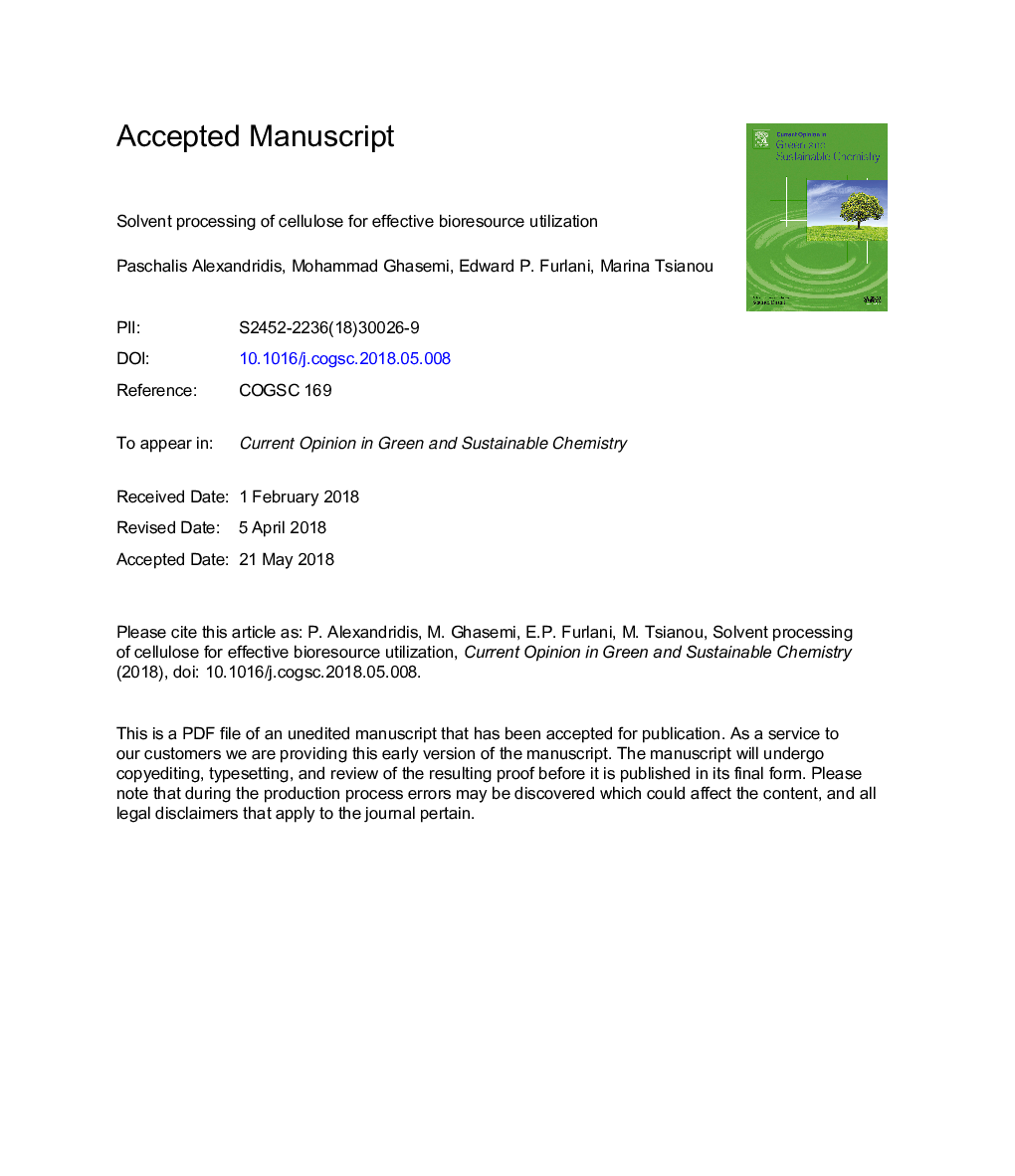| Article ID | Journal | Published Year | Pages | File Type |
|---|---|---|---|---|
| 7695109 | Current Opinion in Green and Sustainable Chemistry | 2018 | 23 Pages |
Abstract
Cellulose, the main constituent of plant biomass, is a unique stereoregular, chiral, biocompatible and reactive polymer that finds many applications. Despite the novel features of cellulose, its full potential as a functional polymer has yet to be realized in part because of the difficulty in dissolving cellulose. Non-derivatizing solvents for cellulose are reviewed here, with a focus on the better studied and more effective aqueous alkali (base) containing solvents, organic solvent systems, and ionic liquids. Recent advances are highlighted on cellulose-solvent interactions and on the mechanism and kinetics of semicrystalline cellulose dissolution. An improved fundamental understanding of molecular interactions (nanoscale), coupled with the biomass dissolution mechanism (microscopic level), can guide the rational selection and (macroscopic) optimization of solvent processing conditions. Opportunities abound for the translation of research fundamentals into the development of industrial solvent-based processes for the efficient production of high value-added polymers and chemicals from sustainable resources.
Related Topics
Physical Sciences and Engineering
Chemical Engineering
Catalysis
Authors
Paschalis Alexandridis, Mohammad Ghasemi, Edward P. Furlani, Marina Tsianou,
